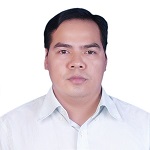Application of topology optimization technique in sand casting process of a complex product based on FDM 3D printing technology
Abstract
Design optimization is one of the emerging CAE technologies thanks to the robust and strong structure of the computer and the ability to create complex designs using material additive technology. Recent modern innovations in 3D printing technology have made metal casting new breakthroughs. The demand of many products with complex shapes and geometries becomes very high. This makes the 3D printing more helpful and meaningful to contribute in the field of product design and development. This study presents an integrated framework for the implementation of complex 3D product design from fundamental technologies of CAD/CAE/AM (Computer Aided Design/Computer Aided Engineering/Additive manufacturing). Then, we apply casting technology to create models for products with complex shapes from FDM 3D printing technology. This integrated process is essential in assisting engineers to quickly design and create prototypes, and to fully control errors occurring during prototyping through CAD/CAE simulation to improve production efficiency of businesses and reduce time to bring products to customers. The experiment of sand casting based on the mold core from AM technology confirmed that the integrated approach is effective and applicable in the practice at manufacturing enterprises.
Keywords
Full Text:
PDFReferences
Gebisa, A.W. and H.G. Lemu, A case study on topology optimized design for additive manufacturing. IOP Conference Series: Materials Science and Engineering, 2017. 276: p. 012026.
Aliyi, A.M. and H.G. Lemu, Case study on topology optimized design for additive manufacturing. IOP Conference Series: Materials Science and Engineering, 2019. 659: p. 012020.
Martin, L. and S. Kedziora, Design of Automotive Road Racing Rim with Aid of Topology Optimization. 2016, Faculty of Science, Technology and Communication University of Luxembourg.
Rezaie, R., et al., Topology Optimization for Fused Deposition Modeling Process. Procedia CIRP, 2013. 6: p. 521-526.
Zegard, T., G.H.J.S. Paulino, and M. Optimization, Bridging topology optimization and additive manufacturing. Struct Multidisc Optim, 2016. 53(1): p. 175-192.
Ranjan, R., R. Samant, and S. Anand, Integration of Design for Manufacturing Methods With Topology Optimization in Additive Manufacturing. Journal of Manufacturing Science and Engineering, 2017. 139(6).
Doubrovski, Z., J.C. Verlinden, and J.M.P. Geraedts, Optimal Design for Additive Manufacturing: Opportunities and Challenges. 2011. p. 635-646.
. Liu, J., et al., Current and future trends in topology optimization for additive manufacturing. Structural and Multidisciplinary Optimization, 2018. 57(6): p. 2457-2483.
Tyflopoulos, E., et al., State of the art of generative design and topology optimization and potential research needs. 2018.
Huu Nghi, H., et al. Application of fuzzy Taguchi method to improve the dimensional accuracy of Fused Deposition Modeling processed product. in 2017 International Conference on System Science and Engineering (ICSSE). 2017.
Huynh, N.H., et al., Optimizing process parameters to improve the compressive strength of FDM products (Fused Deposition Modeling). Science and Technology Development Journal, 2017. 20(K5): p. 37-43.
Huu, N.H., et al. Effects of Infill, Infill Patterns and Number of Perimeter Shells on Casting Patterns Fabricated Using FDM Method. in 2018 4th International Conference on Green Technology and Sustainable Development (GTSD). 2018.
Huynh, H.N., et al., Research on the Effect of Technical Attributes on the Tensile Strength of FDM Products. Key Engineering Materials, 2020. 863: p. 33-50.
Tho, N.H., T.C. Minh, and N.P. Tai, The effect of infill pattern, infill density, printing speed and temperature on the additive manufacturing process based on the FDM technology for the hook-shaped components. POLIMESIN Journal, 2020. 18(1): p. 1-6.
DOI: http://dx.doi.org/10.30811/jpl.v19i2.2115
Refbacks
- There are currently no refbacks.

This work is licensed under a Creative Commons Attribution-ShareAlike 4.0 International License.
Ciptaan disebarluaskan di bawah Lisensi Creative Commons Atribusi-BerbagiSerupa 4.0 Internasional .
Alamat Surat :
.png)
1.png) Politeknik Negeri Lhokseumawe
Politeknik Negeri Lhokseumawe
Jl. Banda Aceh-Medan Km 280
Buketrata, Lhokseumawe, 24301, Aceh, Indonesia
1.jpg)
.jpg)





























